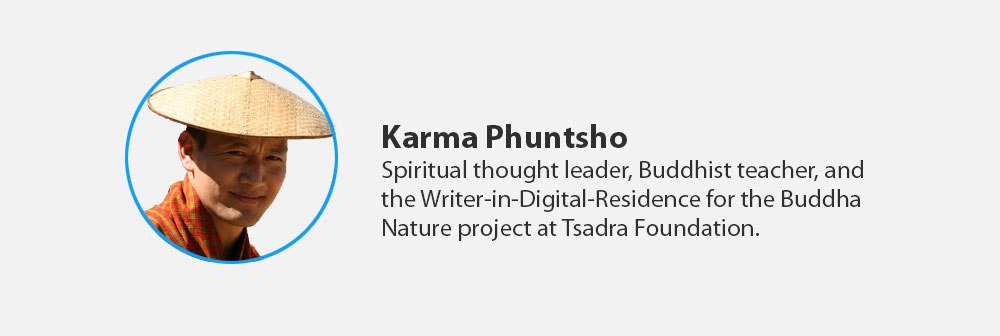Tshewang (ཚེས་དབང་) is an empowerment ritual for longevity which is commonly conducted in the Bhutan and the Buddhist Himalayas. Lamas are often requested to give a longevity empowerment by a patron, an ill person or people wishing to have spiritual blessings. Thus, tshewang is the most common wang rite one can find in the Buddhist Himalayas.
A long human life is viewed as a great opportunity to seek enlightenment and benefit for the world. Thus, Buddhist practitioners often work on elongating the life through various rituals and practices. The Buddha of Longevity, Amitāyus, is mainly invoked for blessings of longevity and people also pray to other Buddhas such as White Tara and Padmasambhava in order to attain a long life. The tshewang empowerment is based on the visualisation of one of these deities, the most common of them being Amitāyus.
At the outset, the officiant giving the tshewang empowerment must carry out meditation to cultivate the power by visualising the Buddha and chanting mantras. After this is done, the recipient of the tshewang empowerment must request the officiant to bestow the empowerment following which the officiant instructs the recipient to enter the particular maṇḍala of the Buddha. In this process, the master, who bestows the tshewang, often assumes the form of Amitāyus through meditation. It is important that the officiant is a master who has already undergone serious meditation and spiritual practice, particularly by visualising the relevant Buddha and chanting the relevant mantras as required by the tradition. Having visualised as the Buddha, the master then invites the actual Buddhas from the various realms to be dissolved with the master in non-dual state.
Through a series of visualisation, the master then bestows the empowerment of longevity. The recipient is given the sacred water out of a vase. The vase is often imagined to be a maṇḍala of the Buddhas who dissolve into liquid form and is poured out as blessings for the recipient of the empowerment. The master also uses the tshetor (ཚེ་གཏོར་) or longevity torma sculpture to bless the recipient. The recipient is given the dudtsi (བདུད་རྩི་) or longevity nectar from a skull cup and the tsheril (ཚེ་རིལ་) or longevity pills. The nectar is made from alcohol with sugar added to it and the pill is made from roaster barley flour by mixing it with butter, sugar or honey. The nectar is served in a few drops using a spoon and the pills are made in small round balls of dough. The master also uses a tshedar (ཚེ་མདའ་) or longevity arrow to attract the powers and essences of life and place them in the recipient. This is an arrow with a mirror and five coloured scarves attached it. The officiant waves the arrow in accordance with the liturgy of the empowerment.
The empowerment requires the recipient to go through a rigorous process of visualisation in order to effectively receive the blessings of longevity. The use of the above mentioned implements is accompanied by mental visualisation and chanting of mantras and words. The essences of all elements of nature such as earth, fire, water, and air, and the powers of all Buddhas and divine beings are imagined to be brought together and immersed into the person of the recipient. Visualisation is also done to stabilize the recipient’s life.
Liturgies for longevity empowerments form an important part of the empowerment literature. Every Buddhist tradition in the Himalayas has its own form of longevity liturgies and practice while some liturgies such as the one by Thangtong Gyalpo are shared by many traditions. As a long life serves as wonderful state to carry on Buddhist practice to reach enlightenment, long life is sought as an important temporary goal of spiritual practice. Thus, most Buddhist masters are said to have a specific longevity deity through whom they extend their life.
When people are ill or faced with life threatening calamities, longevity empowerments are given as a remedy. Astrologers and diviners declare that some people have exhausted their life span and a going to die soon unless they carry longevity practices including receiving longevity empowerment. Thus, tshewang is also conducted as remedial ritual. As longevity is something almost everyone wants, it is very common to find high lamas give longevity empowerments to huge crowds as part of their public religious service. However, the ultimate tshewang is a state where one is spiritually empowered to full control over one’s life.


